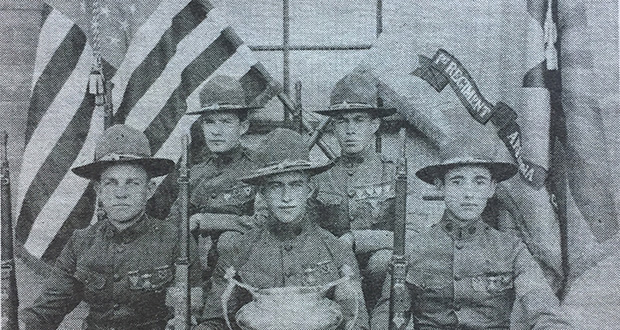Charles Williams
Arizona Capitol Reports Staff//May 19, 2006//[read_meter]
Charles Williams was a disabled World War I veteran who enjoyed prospecting. On a Friday afternoon in early January 1935, Williams drove out along the Apache Trail, left the car along the side of the road, and headed into the Superstition Mountains. Undoubtedly, he was looking for the treasures of Jacob Waltz, the Lost Dutchman.
In a report in the Phoenix Gazette, Williams said he “walked steadily for several hours, examining the rocks and other geological features….” At about 4 p.m. he entered a cave in an arroyo. Inside the cave, he found a large pile of “sparkling, yellow, glittering gold.”
He estimated the pile contained “several score pounds” of what appeared to be semi-refined gold. Dropping to his knees, he “plunged his hands into the great mass and let the giant nuggets course through his fingers.”
Williams put some nuggets in his pocket. He ripped a sleeve off his shirt, tied one end, filled it with nuggets, and set off with his treasure toward his waiting family. Darkness fell and he became hopelessly disoriented and lost. He walked all night. On Saturday morning he shot a rabbit and cooked it over a fire.
Wandering all day Saturday, he was sure he would find his way out of the Superstition Mountains. It was reported that he said, “I’ve been lost four or five times before and every time I came out all right.” As night fell again, he approached a cave and encountered a bear. He shot the bear, but spent a restless night in the cave.
He spent Sunday wandering the Superstition Mountains with his heavy load of gold he estimated to be 20 pounds. Late in the day, he wandered into a canyon where a rancher had built some fences and a watering hole. He spooked a javelina that turned and charged him. He was forced to kill the animal. Almost immediately, three men started to fire at him with their guns. He returned fire and eventually escaped.
His aimless wanderings continued all day Monday. As darkness fell, he finally got his bearings and figured out where he was. He carefully made his way in the dark toward the Apache Trail. At one point on his journey, he nearly fell off a cliff and had to backtrack to safety. At about 2 a.m. on Tuesday, he saw the camp of some other prospectors. Fearing robbery, he buried his sleeve of gold before he approached the camp.
The prospectors brought him to Phoenix and the sheriff. Williams was sure he could find the cave with the pile of gold and his shirt sleeve full of gold once he got some rest. The only proof of his tale of treasure was 12 gold nuggets weighing about 12 ounces that he had in his pocket. The Arizona Republic reported, “The Arizona Assay Office stated that the nuggets appeared to be melted dental gold, valued at about $400.”
After resting for several hours, Williams took several deputies from the Sheriff’s Office back to the area to find the hidden gold. As they could not find the sleeve filled with gold, he figured “somebody else must have seen him hide it, and later taken it.”
Later in 1935, federal authorities claimed Williams’ 12 ounces of gold under Depression era gold laws, which stipulated that people could only possess five ounces of gold. Williams never again located the cave he said he found on his adventure.
Some said that Williams was “suffering from hallucinations caused by his state of exhaustion.”
He always maintained that his story was entirely true.
— Mike Miller, photo courtesy Arizona State Library, Archives and Public Records, Archives Division, Phoenix, #97-9577.

















